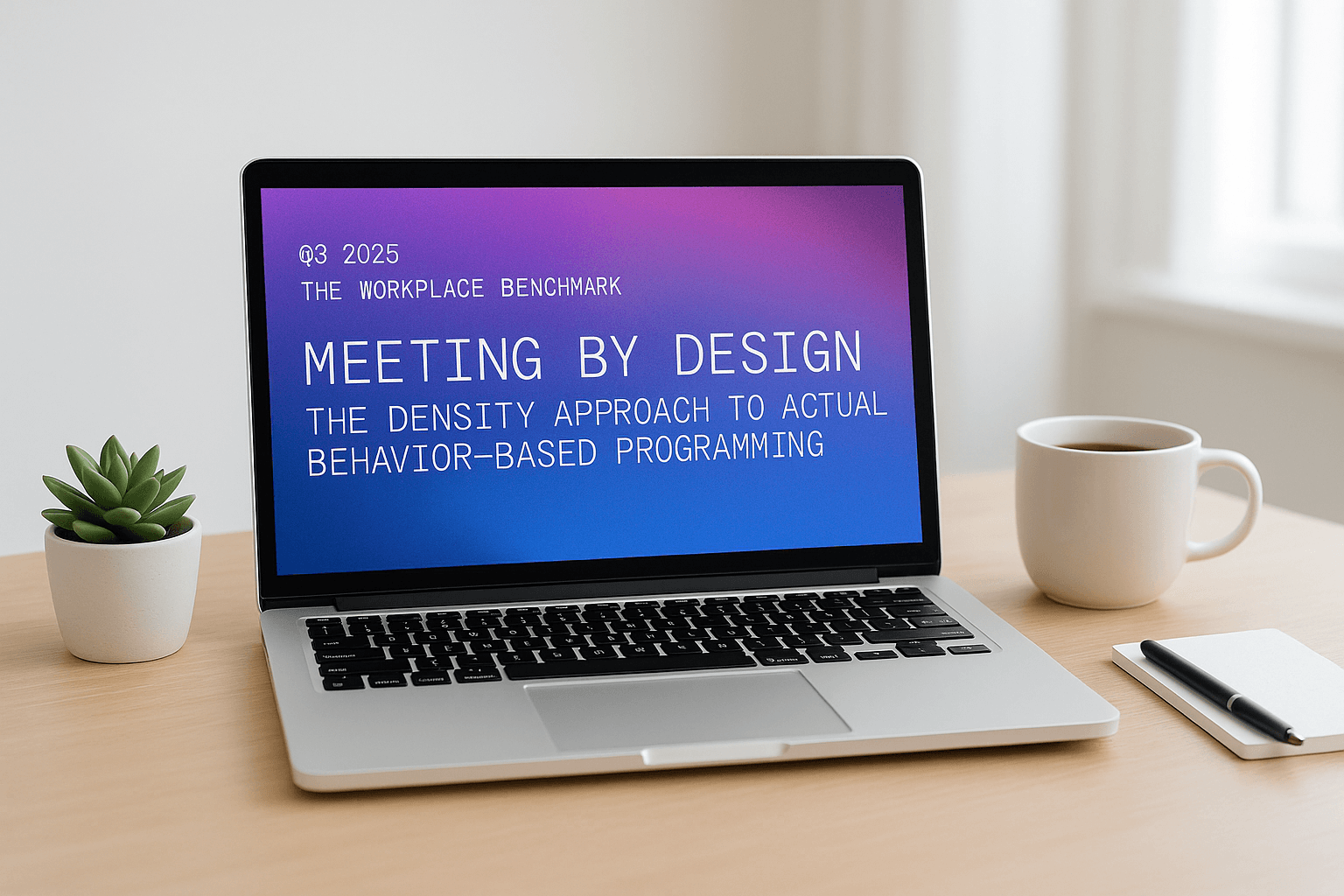Beyond desk sharing ratios: the new metrics for smart occupancy planning
Go beyond the desk sharing ratio metric to achieve efficiency in occupancy planning without compromising experience.

The new world of work has turned occupancy planning into a high-stakes game of Tetris. Planners face mounting pressure to slash unused office space while also evaluating teams’ demands for more desks.
Historically, occupancy planners have relied on manual studies and other helpful but incomplete data sources like badge-ins.
This imperfect information is translated into a desk sharing ratio – the number of people assigned to a desk – which is then used to allocate space to teams. But while desk sharing ratios may have worked when everyone was coming into the office most days, this static, theoretical metric just isn’t working for the variable, flexible hybrid work of today.
It's time to move beyond the outdated ratio. There are two key metrics that the best occupancy teams are using today - and they show how people break out their office time between focus and collaboration spaces:
Peak Desk Utilization by Team
One of the biggest flaws of desk sharing ratios is they treat all teams the same. In reality, different teams exhibit different patterns in how and when they use their assigned desks and workspaces.
By analyzing the peak desk usage during teams' busiest periods, occupancy planners can pinpoint the actual number of unused desks per team - even on their highest occupancy days. This allows for precise right-sizing of teams to their true space needs.
For example, a Density analysis across multiple teams showed that despite being allocated over 140 desks, one team only used 81 of those desks at their peak times, leaving 59 desks unused. With this data, plans can be updated to match the space teams are actually using.

Meeting Room Saturation
The hybrid era has exposed a new pitfall for open-office floorplans: a shortage of meeting rooms and enclosed spaces for hybrid meetings and heads-down work.
Because meeting rooms are so in demand, leading occupancy teams closely monitor meeting room saturation - the percentage of rooms simultaneously in use during peak periods.
If meeting room usage climbs above 80% saturation, it's a signal that adding more employees to the floor will lead to availability issues and frustrating experiences.
Combining meeting room saturation with peak desk usage data allows planners to maximize total occupancy while still ensuring access to key amenities like meeting rooms. This keeps employees happy and productive even as occupancy levels increase.
One Density client found they could fit 34% more employees into the same space based on desk availability, but adjusted that to 26% more employees when taking meeting room availability into account. This adjustment yields more than $1 million a year in lease savings.

The Intelligent Occupancy Planning Playbook
Occupancy planning today is about maximizing what you get out of every square foot of office space. The combination of peak desk utilization and meeting room availability gives you a nuanced way to look at how employees spend their time across different spaces, versus just increasing desk sharing ratios indiscriminately.
While you could just maximize peak desk utilization levels to squeeze as much value as possible from the workspace, by applying meeting room availability metrics, you ensure employees have access to collaboration spaces they need to be productive.
With data from sensors that show how spaces are (or aren’t) used, you can make sure your workspaces meet the needs of a hybrid workforce.
The payoff? Millions in potential cost savings from reduced real estate footprints, without compromising the workplace experience that attracts employees to the office.
Interested in bringing intelligent occupancy planning to your organization? Check out our on-demand webinar: How to Deliver Real Estate ROI with Upleveled Occupancy Planning.
Key Takeaways

DisruptCRE founder shares how corporate real estate is changing
Companies are moving employees from underutilized offices into "space as a service” options with utilization data.
Watch now
Half of offices are empty but you still can’t find a meeting room
Employees waste up to 30 minutes a day looking for a meeting room to meet in workplaces.
Read moreMost recent

Meeting space playbook: programming ratios that really work
Forget static formulas. This new research-driven playbook shows how to use real behavior to right-size your office for today’s meetings.

Space waste: The industry’s naughty and nice list
Our sensors spilled the beans: What industry is winning, who's wasting and who's hogging your office real estate.
.png)
Improve your occupancy sensor RFP with our best practice guide
Discover essential questions to simplify your occupancy sensor RFP process and confidently choose the right vendor.
.png)
Room raiders: The office upsizing epidemic
Tiny teams hogging big rooms leave large groups stranded—welcome to the new war for meeting space!
Explore other Density Products
Atlas for Workplace
Insights for the workplace that help you cut costs and deliver better spaces.
Learn more